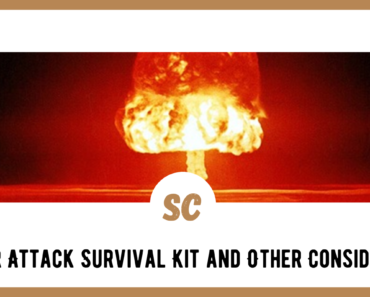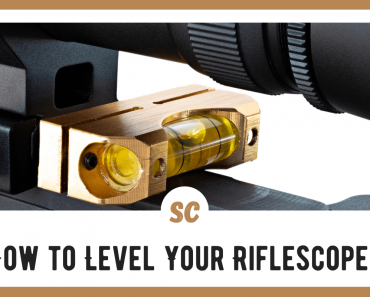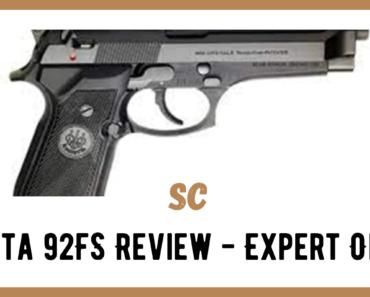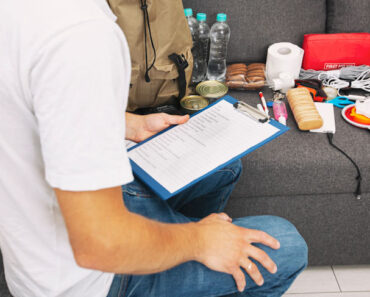Being armed and able is a challenge for those with physical limitations, but that doesn’t mean their limitation can stop them from learning proper gun handling.
We live in an era where gun control is a daily topic, and at the same time, there are gun enthusiasts becoming more tactical and concerned with acquiring various firearms and the appropriate ammunition. However, there is a group of people that is often ignored when it comes to the topic of owning a firearm — those with physical limitations.
It seems that a lot of training and “gun talk” put an emphasis on the need to be physically fit and agile to operate a firearm and train regularly to use that firearm. While this is important and shouldn’t be ignored, we also have to acknowledge that not everyone has such capabilities.
In the United States, every person has the right to own a firearm, and this right shall not be infringed, not even due to physical limitations, no matter what those limitations are. You don’t need to be defenseless, and it’s your right to own a gun and use it to save your life.
When it comes to physical limitations, there’s a wide spectrum of categories. One obvious group of people are the elderly, and we have to understand that time forgets no one. As we age, we will all have to deal with reduced strength, poor vision, difficulty with fine motor skills, and a limited range of motion. This can pose a challenge when it comes to operating and shooting a firearm. Loading magazines, managing recoil, racking a slide, and even establishing a quick sight picture are often problematic for people with physical limitations.
Another group that people hardly ever talk about are people who are physically disabled in one form or another. There may be folks confined to a wheelchair, some may have a prosthetic limb or suffer from neurological disorders. There are dozens of conditions that can limit the ability of a person to utilize a firearm when they need it the most.
And besides these, there are a few quite common conditions that affect all people of all ages. Things like fibromyalgia, arthritis, sclerosis, and many others will seriously impact your ability to use a firearm.
Making the right choices
I believe that there’s always hope for everything, even with physical limitations, and in this case, the key is finding a firearm that you can safely manage. This doesn’t mean you should stick to smaller guns because these might not be the proper choice. In fact, smaller guns are often harder to hold on to and snappier than bigger firearms.
When picking a firearm, you should consider every aspect of it, from the dimensions and the build of the gun itself to the ammo it needs to fire. Besides this, you should also think about why you need a gun. Perhaps there are some folks who need it for competition or for spending time at the range with friends. Perhaps you want a gun for personal protection. There are a variety of firearms to be considered if these would be used by people with physical challenges.
It goes without saying that specific limitations will dictate the basics of the gun itself. Even so, you should try to find a gun and ammo combination that ultimately minimizes weight, recoil, and muzzle rise. In some cases, the best option would be a full-sized firearm shooting subsonic .22 LR ammo like one of Walther’s rimfire Colt 1911 replicas. Such a setup provides a much more pleasant shooting experience offering enough mass to absorb most of the .22 LR recoil and muzzle rise.
For those with physical limitations, sticking with subsonic ammo is often recommended for defensive calibers. The subsonic rounds are heavier than supersonic rounds and are engineered to operate at speeds below the speed of sound (usually 1,126 feet per second). Using this type of ammo avoids the shockwave of the supersonic round, and the bullets that leave the barrel slower, in turn, create less recoil for the operator.
If you want to use the firearm for competitions, you should stick with low-recoil rounds fired from a heavy gun if possible. These might not always be possible, and often times you would have to compromise.
Using a Glock 48 with subsonic 147-grain 9mm ammo could be such a compromise. These bullets fly at only 980 feet per second and produce almost 35% less energy and recoil than the standard 115-grain 9mm ammunition.
Using subsonic ball ammo always has a tradeoff, and it’s not recommended to use such ammunition for personal defense since their overpenetration can cause serious problems. Although these rounds will make your time more manageable and enjoyable at the range if you are dealing with physical limitations, you should always equip a self-protection gun with ammunition destined for personal protection. You may have a hard time managing these rounds at the range, but you could manage to hit a target in a life-or-death situation.
There are dozens of firearm/ammo combinations that you can put together and try, and the best way to figure out which of these combinations work is to put them to the test at the range and see if they fit your abilities and needs.
You can also go with a training gun and a carry gun, and people with physical limitations will often do so. They pick a .22 LR firearm for training, and they switch to something more powerful for their daily carry, like a 9mm. Even if you use the .22 LR firearm for the training, make sure you test-drive the 9mm gun every now and then. Even if these guns are different, your muscle memory will still transfer between the two.
Carry problems for people with physical limitations
When you find the right gun and ammunition combo for your needs and abilities, you also have to consider how you carry it. Perhaps the same limitations that apply to using the gun may also apply to the way you carry your gun.
You need to find ways to carry the firearm in ways that make it easily accessible. For example, some folks will go with a belly band since these are lightweight, soft, and stay fixed around your core. Being flexible, a belly band will allow you to carry the gun in various positions. Most of these fasten with Velcro and are easy to put on or remove, making them ideal for those struggling with fine motor skills problems.
If the person is confined to a wheelchair, then an off-body carry option might be better suited. There are many companies making bags, briefcases, and purses designed for carrying defensive guns. These have built-in pouches and holsters that can perfectly host a variety of guns. If you consider this option, I would suggest going with something that has a strap so you can wear it across your body. The bag will be secured to your body and will be within reach to help you draw your gun more easily.
The problem with picking an off-body carry option is that the gun owner must always remain vigilant about the whereabouts of the bag. Some people often forget these bags in the public bathrooms, or they have them stolen, and the consequences of these actions are sometimes tragic.
There are many options available for various carry concerns, and you need to find what works best for you and the physical challenges you need to adapt to. Once you find what works for you, it’s crucial to train and practice drawing your gun from the carry setup. Proper training will make sure there are fewer errors when handling the firearm. Only through regular testing will you figure out if the gun of your choice is suited for the specific carry rig. Sometimes the bag or purse you pick can be too big or too small for your gun.
Other suggestions
There are all sorts of special tools you can use to make your daily carry and range routine easier if you struggle with physical limitations. There are various tools designed to make your life easier with shooting-related tasks.
For example, loading magazines is one such task, and even if you still have strong and capable hands, with the passing of time, it will become a difficult and monotonous task. In such cases, you can use magazine loaders since there are many options available, and most of these take the difficulty out of the task of loading multiple rounds at once. Not only are they much easier on your hands, but they also speed up the whole process.
If you want to explore such options, here are a few companies manufacturing magazine loaders: UpLULA loader, Caldwell Mag Charger Universal Pistol loader, and the Pistol Magazine Speed loader. It’s better to look at each of these since their operation mode is different, and they do not fit every magazine or every type of ammo. Do some tests and see what loader best suits your needs.
Another crucial aspect for those dealing with physical limitations is finding and working with a skilled instructor. You need to work with someone that understands the challenges you’re dealing with and knows how to help you overcome them. Such an instructor will be able to address your strengths and weaknesses and will help you become more confident once you run your gun by taking into account these factors.
Oftentimes, you may need to go with individual personal training so that the trainer can focus on your concerns and abilities. There are many trainers and organizations that specialize in working with people who are physically challenged. For example, the NRA’s Adaptive Shooting Program is “designed to increase access and participation in shooting activities for people with disabilities.” They often provide specialized techniques and technologies which are unique to each person.
There are also organizations that have senior-only classes, and their training techniques will focus mostly on the specific needs of people. There are various training courses out there, and you just need to find what works best for you. If you have trouble finding them, contact a reputable trainer or organization, and they will be able to point you in the right direction.
Concluding
While it’s important to know your limitations, you also have to acknowledge that there are always options when it comes to owning and using a firearm. Training with that firearm and being able to use it properly during a shooting competition or a life-or-death scenario is possible only after you acknowledge what you are capable or aren’t capable of. Once you find the right gun, ammunition, carry method, and instructor, there will be no difference between you and any other responsible gun owner out there. You will be able to carry and use it with confidence, and you will be in control of your own personal protection.




























